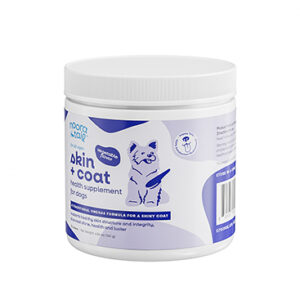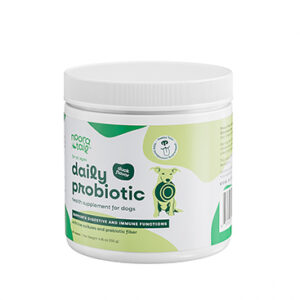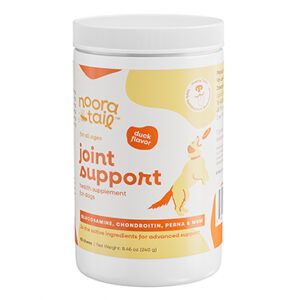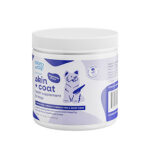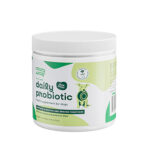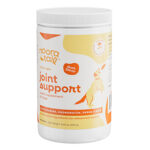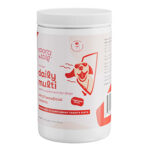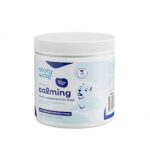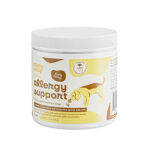Outline for Sugar-Free Dog Treats

Dogs are our beloved furry friends, and as such, we want to provide them with the best possible care, including a healthy diet. While treats can be a fun and rewarding way to show your dog some love, many commercially available treats contain high amounts of sugar, which can be detrimental to their health.
Sugar-free dog treats offer a healthier alternative, providing a sweet treat without the added sugar. This article will guide you through the benefits, recipes, and ingredients to consider when choosing sugar-free dog treats.
Benefits of Sugar-Free Dog Treats
- Reduced risk of dental problems: Sugar can promote the growth of bacteria in the mouth, leading to tooth decay and gum disease. Sugar-free treats help maintain your dog’s oral health.
- Improved digestion: Sugar can disrupt the natural balance of bacteria in the digestive system, causing digestive upset. Fiber-rich sugar-free treats support healthy digestion.
- Weight management: Sugar is high in calories, and excessive consumption can lead to weight gain. Sugar-free treats help control your dog’s weight, especially if they are prone to obesity.
- Reduced risk of diabetes: Sugar raises blood glucose levels, which can put dogs at risk of developing diabetes. Sugar-free treats help prevent this condition.
Recipes for Sugar-Free Dog Treats
Banana and Peanut Butter Oatmeal Bites:
- 1 overripe banana, mashed
- 1/2 cup old-fashioned oats
- 1/4 cup natural peanut butter
Preheat oven to 350°F (175°C). Line a baking sheet with parchment paper. In a bowl, combine the mashed banana, oats, and peanut butter. Mix until well combined. Form into 1-inch balls and place on the prepared baking sheet. Bake for 20-25 minutes, or until golden brown.
Sweet Potato and Apple Chips:
- 1 sweet potato
- 1 apple
- Cinnamon (optional)
Preheat oven to 250°F (120°C). Line a baking sheet with parchment paper. Peel and slice the sweet potato and apple thinly. Arrange on the prepared baking sheet and sprinkle with cinnamon if desired. Bake for 2-3 hours, or until crispy.
Carrot and Banana Pupsicles:
- 1 carrot, peeled and chopped
- 1 ripe banana
- 1/4 cup water
In a blender, combine the carrot, banana, and water. Blend until smooth. Pour the mixture into popsicle molds. Freeze for at least 4 hours, or until solid.
Ingredients to Consider
- Fruits: Bananas, apples, berries, and blueberries are all excellent sources of fiber, vitamins, and antioxidants.
- Vegetables: Carrots, sweet potatoes, and pumpkin are packed with nutrients and fiber.
- Yogurt: Plain, unsweetened Greek yogurt is a good source of protein and probiotics.
- Peanut butter: Natural peanut butter is a protein-rich treat, but choose unsweetened varieties without added sugars or salts.
- Whole grains: Oatmeal, brown rice, and quinoa provide fiber and complex carbohydrates.
Conclusion
Sugar-free dog treats are a healthy and delicious way to show your furry friend you care. By following the recipes and ingredients outlined in this article, you can create your own homemade treats that are free from added sugars and promote your dog’s well-being. Remember to always consult with your veterinarian before introducing any new treats to your dog’s diet.
Introduction

Introduction
Dogs, our beloved furry companions, deserve the best nutrition to maintain their health and well-being. Sugar-free dog treats are a crucial aspect of a wholesome diet, promoting dental health, preventing weight gain, and protecting against diabetes and other chronic diseases.
What are Sugar-Free Dog Treats?
Sugar-free dog treats are culinary delights specifically crafted without added sugars, such as sucrose, fructose, or corn syrup. Instead, they often rely on natural sweeteners like honey, fruit, or vegetables to provide a tasty yet sugar-free experience.
Importance of Avoiding Sugar in Dog Diets
Sugar, a common ingredient in processed human foods, is not a natural part of a dog’s diet and can have detrimental effects on their health:
- Dental Problems: Sugar feeds plaque-forming bacteria, leading to tooth decay, gingivitis, and periodontal disease.
- Weight Gain: Excess sugar contributes to weight gain, especially in sedentary dogs, increasing the risk of obesity-related health issues.
- Diabetes: Sugar can spike blood glucose levels, especially in diabetic dogs, leading to complications such as blindness and organ damage.
- Other Health Concerns: Sugar can contribute to hyperactivity, anxiety, and inflammation throughout the body.
Benefits of Sugar-Free Dog Treats
Sugar-free dog treats offer several health benefits:
- Improved Dental Health: By eliminating sugar, these treats help reduce plaque buildup and promote strong, healthy teeth.
- Weight Management: The absence of sugar prevents weight gain and supports a healthy weight for your pup.
- Reduced Risk of Diabetes: Sugar-free treats do not elevate blood glucose levels, minimizing the risk of diabetes and its complications.
- General Health: By avoiding sugar, these treats contribute to overall well-being, reducing inflammation and promoting a healthy immune system.
Choosing Sugar-Free Dog Treats
When selecting sugar-free dog treats, consider the following:
- Read the Ingredient List: Carefully check the ingredients list to ensure there are no added sugars.
- Look for Natural Sweeteners: Seek treats sweetened with honey, fruit, or vegetables, which provide a natural sweetness without the harmful effects of sugar.
- Consider the Calories: Even sugar-free treats can have high calories, so choose treats that complement your dog’s daily caloric needs.
- Avoid Artificial Sweeteners: Some sugar-free treats contain artificial sweeteners, which may have their own health concerns.
Homemade Sugar-Free Dog Treats Recipe
If you prefer to make your own sugar-free dog treats, try this simple recipe:
Ingredients:
- 1 cup whole wheat flour
- 1/2 cup peanut butter (unsweetened and unsalted)
- 1/2 cup pumpkin puree
- 1/4 cup honey
- 1 egg
Instructions:
- Preheat oven to 350°F (175°C).
- In a bowl, combine all ingredients and mix well until a dough forms.
- Roll out the dough to a thickness of 1/4 inch (0.6 cm).
- Cut out desired shapes using cookie cutters.
- Place the treats on a parchment paper-lined baking sheet.
- Bake for 15-20 minutes or until golden brown on the edges.
- Let cool completely before giving to your pup.
Conclusion
Sugar-free dog treats are an essential part of a wholesome diet for our beloved companions. By avoiding sugar, these treats promote dental health, prevent weight gain, and reduce the risk of chronic diseases. When choosing store-bought or making your own treats, opt for options that are truly sugar-free and free of artificial sweeteners. With a little effort, you can ensure your furry friend enjoys tasty treats without compromising their health.
Benefits of Sugar-Free Dog Treats

As dog owners, we all want the best for our furry companions. However, our canine friends often have a weakness for sugary treats, which can have detrimental effects on their health. Sugar, like in humans, can lead to weight gain, dental issues, and other health concerns in dogs.
In this article, we delve into the benefits of offering sugar-free dog treats to your beloved pet. From improved dental health to enhanced energy levels, discover why it’s time to ditch the sugary treats in favor of healthier alternatives.
Improved Dental Health
Sugar is a major culprit in tooth decay and gum disease in both humans and dogs. When bacteria in the mouth feed on sugar, they produce acids that attack the tooth enamel. Over time, this can lead to cavities, tooth loss, and painful infections.
Sugar-free dog treats, on the other hand, help maintain good dental health. They do not provide the bacteria with the sugar they need to produce acids, reducing the risk of dental problems. Some sugar-free treats even contain ingredients like baking soda or enzymes that actively fight bacteria and promote fresh breath.
Reduced Obesity Risk
Obesity is a growing concern among dogs, with over half of all pets in the United States being overweight or obese. Sugar contributes significantly to weight gain because it is high in calories and provides little nutritional value.
Sugar-free dog treats, however, are typically lower in calories and contain ingredients that promote fullness. For example, fiber-rich treats can help dogs feel satisfied after eating, reducing their overall calorie intake.
Enhanced Energy Levels
Sugar provides a quick burst of energy, but it can also lead to crashes and increased cravings later on. Dogs that consume sugary treats may experience fluctuations in their energy levels, making them feel tired and lethargic after the initial sugar rush.
Sugar-free dog treats, on the other hand, provide sustained energy levels. Ingredients such as oatmeal, sweet potato, and banana release energy slowly, keeping your dog feeling active and alert throughout the day.
Additional Benefits of Sugar-Free Dog Treats
Beyond these three primary benefits, sugar-free dog treats offer several other advantages for your pet’s health:
- Reduced risk of allergic reactions: Some dogs are allergic to certain ingredients in sugary treats, such as wheat or corn. Sugar-free treats often use alternative ingredients that are less likely to cause allergic reactions.
- Improved digestion: Sugar-free treats often contain fiber, which promotes healthy digestion and prevents constipation.
- Suitable for special diets: Dogs with diabetes or other health conditions may require low-sugar or sugar-free diets. Sugar-free treats provide a safe and enjoyable option for these pets.
Making the Switch to Sugar-Free Treats
Transitioning your dog to sugar-free treats is simple. Start by gradually reducing the amount of sugary treats you give your pet, while introducing small amounts of sugar-free treats. Over time, your dog will adjust to the new taste and texture.
Be sure to read the ingredient list carefully when selecting sugar-free treats. Look for treats that are made with whole grains, vegetables, or fruits. Avoid treats that contain artificial sweeteners, which can be harmful to dogs.
Conclusion
Offering your dog sugar-free treats is an easy and effective way to improve their overall health and well-being. From improved dental health to enhanced energy levels, sugar-free treats provide countless benefits without the harmful effects associated with sugar. By making this simple switch, you can give your furry friend a healthier and happier life.
Ingredients for Sugar-Free Dog Treats

As dog lovers, we want to give our furry companions the best of everything, including tasty treats that bring joy to their lives. However, store-bought dog treats often contain excessive sugar, which can contribute to weight gain, dental problems, and other health issues. That’s why it’s essential to explore homemade alternatives that are both delicious and sugar-free.
The Sweet Dangers of Sugar
Sugar provides empty calories and spikes blood sugar levels, leading to weight gain and increased risk of diabetes. Moreover, sugar can damage teeth, promote bacterial growth in the mouth, and contribute to gum disease and tooth decay.
Create a Canine Culinary Delight
Fortunately, making sugar-free dog treats is a breeze. With a few simple ingredients, you can create delectable treats that your pup will love while maintaining their health.
Key Ingredients for Sugar-Free Dog Treats:
-
Whole Grains (e.g., Oats, Brown Rice): Whole grains provide fiber, essential nutrients, and a satisfying texture. They help maintain a healthy digestive system and regulate blood sugar levels.
-
Fruits and Vegetables (e.g., Apples, Carrots): Fruits and vegetables offer vitamins, minerals, and antioxidants that support overall health. Apples contain pectin, a soluble fiber that aids digestion, while carrots are rich in beta-carotene, an essential nutrient for vision.
-
Meats and Poultry (e.g., Chicken, Beef): Lean meats and poultry provide protein, the building blocks for muscles and tissues. They also contain essential amino acids and vitamins that contribute to a healthy immune system and overall well-being.
Recipe for Delectable Sugar-Free Dog Treats:
Ingredients:
- 1 cup cooked oats
- 1/2 cup shredded apple
- 1/2 cup grated carrots
- 1/2 cup cooked chicken or beef
- 1/4 cup peanut butter (unsweetened and unsalted)
- 1/4 cup water
Instructions:
- Preheat oven to 350°F (175°C).
- In a large bowl, combine oats, apple, carrots, meat, peanut butter, and water.
- Mix until well combined and form a dough.
- Roll out dough to a thickness of 1/4 inch.
- Cut out desired shapes using cookie cutters.
- Place treats on a baking sheet lined with parchment paper.
- Bake for 15-20 minutes, or until golden brown.
- Let cool completely before serving.
Additional Tips:
- You can add other sugar-free ingredients to your treats, such as pumpkin puree, sweet potato, or unsweetened coconut flakes.
- If the dough is too dry, add a little more water. If it’s too wet, add some more oats.
- Store treats in an airtight container at room temperature for up to a week.
Conclusion:
Making sugar-free dog treats is a simple and rewarding way to show your furry friend how much you care. By using wholesome ingredients, you can create delicious treats that are not only satisfying for their taste buds but also beneficial for their health. So, next time you want to spoil your pup, consider whipping up a batch of these sweet-free goodies and watch their tail wag with delight.
DIY Recipes for Sugar-Free Dog Treats

As pet owners, we all want to provide the best for our furry companions. And while commercial dog treats can be convenient, they often contain unhealthy ingredients like sugar. That’s why making your own sugar-free dog treats is a great way to ensure your pet is getting the nutrition they need without compromising their health.
Here are three easy-to-make DIY recipes for sugar-free dog treats:
Peanut Butter and Oats
Ingredients:
- 1 cup rolled oats
- 1/2 cup peanut butter
- 1/4 cup water
Instructions:
- Preheat oven to 350 degrees Fahrenheit (175 degrees Celsius).
- In a large bowl, combine all ingredients. Mix until well blended.
- Roll out dough to 1/4-inch thickness on a floured surface.
- Cut into desired shapes with a cookie cutter or knife.
- Bake for 15-20 minutes, or until golden brown.
- Let cool completely before serving.
Pumpkin and Sweet Potato
Ingredients:
- 1 cup cooked pumpkin puree
- 1 cup cooked sweet potato puree
- 1/2 cup rolled oats
- 1 egg
Instructions:
- Preheat oven to 350 degrees Fahrenheit (175 degrees Celsius).
- In a large bowl, combine all ingredients. Mix until well blended.
- Drop by rounded tablespoons onto a baking sheet lined with parchment paper.
- Bake for 20-25 minutes, or until set and slightly golden brown.
- Let cool completely before serving.
Chicken and Apple
Ingredients:
- 1 cup cooked boneless, skinless chicken breast, shredded
- 1/2 cup diced apple
- 1/2 cup rolled oats
- 1 egg
Instructions:
- Preheat oven to 350 degrees Fahrenheit (175 degrees Celsius).
- In a large bowl, combine all ingredients. Mix until well blended.
- Roll out dough to 1/4-inch thickness on a floured surface.
- Cut into desired shapes with a cookie cutter or knife.
- Bake for 15-20 minutes, or until golden brown.
- Let cool completely before serving.
Tips for Making Sugar-Free Dog Treats
- Use whole wheat flour or rolled oats for a healthier alternative to white flour.
- Add fruits and vegetables to your treats for added nutrients and flavor.
- Avoid using sugar, salt, or spices that can be harmful to dogs.
- Store homemade dog treats in an airtight container in the refrigerator for up to 2 weeks.
- Keep an eye on your dog while they eat treats to prevent any choking or digestive issues.
By making your own sugar-free dog treats, you can ensure your pet is getting the best possible nutrition without compromising their health. These treats are easy to make, delicious, and a great way to show your furry friend how much you care.
Commercial Sugar-Free Dog Treat Options
As dog owners, we want to ensure our furry friends live healthy and happy lives. While occasional treats are a welcome way to express our love, it’s essential to consider their nutritional value. Sugar can be detrimental to dogs’ overall well-being, leading to a range of health issues.
Thankfully, there are several commercial dog treat options available that are completely sugar-free. These treats provide a safe and enjoyable way to reward your dog without compromising their health.
Ingredients to Look For
When choosing sugar-free dog treats, pay careful attention to the ingredient list. Look for wholesome ingredients that provide nutritional value, such as:
- Meat: High-quality meat sources like chicken, beef, or fish are excellent sources of protein.
- Fruits and vegetables: Fruits like blueberries, apples, and carrots offer antioxidants and vitamins. Vegetables provide fiber and essential nutrients.
- Whole grains: Whole-wheat flour or brown rice provide complex carbohydrates for energy.
- Yogurt: Plain, unsweetened yogurt is a good source of protein and calcium.
- Natural flavors: Treats may contain natural flavors from sources like vanilla or peanut butter to enhance palatability without adding sugar.
Brands to Consider
Several reputable brands offer a wide range of sugar-free dog treats:
- Blue Buffalo Wilderness Trail Treats: Made with real meat, fruit, and vegetables, these treats are grain-free and free of sugar and artificial flavors.
- Zuke’s Mini Naturals: These grain-free treats are made primarily with chicken or fish and contain no added sugar or fillers.
- PureBites Freeze-Dried Chicken (or Beef, Lamb): These single-ingredient treats are made with 100% pure, human-grade chicken or other meats and are an excellent source of protein.
- Wellness Soft Puree Treats: These treats are made with real meat or fish and pureed fruits or vegetables, with no added sugar or fillers.
- Greenies Pill Pockets Original: While not specifically marketed as sugar-free, these treats are made with digestible plant fibers and contain no added sugar. They are also ideal for hiding medications.
Benefits of Sugar-Free Dog Treats
Choosing sugar-free dog treats offers numerous benefits for your canine companion:
- Dental health: Sugar can contribute to tooth decay and periodontal disease. Sugar-free treats help promote good dental hygiene.
- Healthy weight: Overindulgence in sugary treats can lead to weight gain. Sugar-free options help maintain a healthy weight.
- Reduced risk of chronic diseases: Sugar consumption has been linked to various health issues, including diabetes and cardiovascular disease.
- Improved digestion: Sugar-free treats are easier for dogs to digest and can reduce digestive upset.
- Increased energy levels: Excess sugar can cause energy crashes. Sugar-free treats provide sustained energy levels.
Conclusion
By choosing commercial sugar-free dog treats, you can indulge your furry friend’s sweet tooth while prioritizing their health. These treats offer a variety of wholesome and nutritious ingredients, providing the occasional treat that your dog will love without compromising their well-being.
Precautions for Sugar-Free Dog Treats
As devoted pet owners, we strive to provide our beloved dogs with the best possible nutrition. While sugar-free dog treats may seem like a healthier alternative to sugary counterparts, it’s crucial to approach their consumption with caution. Here’s a comprehensive guide to the precautions you should take when offering your furry friend these treats:
1. Limit Intake to Prevent Digestive Issues
While sugar-free treats are devoid of the harmful effects of excess sugar, they may still contain artificial sweeteners or sugar alcohols. These substitutes can cause digestive upset, especially if consumed in large quantities. Xylitol, a common sugar alcohol found in many sugar-free products, is particularly toxic to dogs and should be avoided at all costs.
To prevent potential digestive issues, it’s essential to limit the intake of sugar-free treats. Consider them as occasional treats rather than a regular part of your dog’s diet. Start by offering small portions and monitor your dog’s response. If any signs of upset stomach arise, such as vomiting, diarrhea, or gas, discontinue consumption immediately.
2. Monitor for Allergic Reactions
Dogs, like humans, can develop allergies to certain ingredients present in sugar-free treats. Artificial sweeteners, for instance, are derived from various sources, and some dogs may be sensitive to specific types. Symptoms of an allergic reaction can include itchy skin, hives, swelling, difficulty breathing, and vomiting.
If you notice any unusual symptoms after your dog consumes a sugar-free treat, consult your veterinarian promptly. Early detection and treatment of allergic reactions are vital to ensure your dog’s well-being.
3. Natural Sweeteners: Handle with Caution
Some sugar-free treats may use natural sweeteners such as honey, maple syrup, or coconut sugar as an alternative to artificial sweeteners. While these natural options are generally safer, it’s important to use them in moderation and avoid frequent consumption.
Honey, for example, is high in fructose, a natural sugar that can contribute to weight gain and other health issues if consumed in excess. Maple syrup and coconut sugar are also natural sources of sucrose, which can have similar effects as regular sugar.
4. Consider the Treat’s Ingredients
Before offering any sugar-free treat to your dog, carefully scrutinize its ingredients list. Avoid treats that contain harmful substances such as xylitol, macadamia nuts, or grapes, which can be toxic to dogs.
Look for treats that use whole, natural ingredients and avoid artificial preservatives, flavors, and colors. These additives can potentially trigger allergies or other health issues.
5. Regular Dental Care is Still Essential
Despite the lack of sugar, sugar-free treats can still contribute to plaque and tartar buildup on your dog’s teeth. Regular dental care, including brushing and professional cleanings, remains paramount to maintain your canine companion’s oral health.
Conclusion
Sugar-free dog treats can be an occasional treat for your furry friend, but it’s crucial to approach their consumption with caution. Limit intake to prevent digestive issues, monitor for allergic reactions, and carefully consider the treat’s ingredients. With these precautions in mind, you can provide your dog with guilt-free indulgence while safeguarding their health and well-being.
Storing and Shelf Life of Sugar-Free Dog Treats
As responsible dog owners, we want to ensure our furry companions enjoy delicious and healthy treats. Sugar-free dog treats are a great option for maintaining their dental health and overall well-being. However, proper storage is essential to preserve their quality and freshness.
Storage Recommendations
To maximize the shelf life of sugar-free dog treats, follow these storage guidelines:
- Airtight Containers: Store treats in airtight containers to prevent moisture and oxygen from compromising their integrity. Reusable glass or plastic containers with tight-fitting lids are ideal.
- Cool and Dry Place: Keep treats in a cool and dry place, away from direct sunlight and heat sources. A pantry or dry cupboard is a suitable location.
- Refrigeration: For extended storage, consider refrigerating treats in an airtight container. This will prolong their freshness but may affect their texture slightly.
- Avoid Freezing: Freezing is generally not recommended for sugar-free dog treats as it can alter their texture and taste.
Estimated Shelf Life
The shelf life of sugar-free dog treats depends on the ingredients used and storage conditions. However, as a general guideline, you can expect the following:
- At Room Temperature: 2-4 weeks in an airtight container
- Refrigerated: 4-6 weeks in an airtight container
- Commercial Treats: Store-bought commercial treats typically have a longer shelf life due to preservatives. Check the packaging for specific guidelines.
Signs of Spoilage
It’s essential to regularly check dog treats for any signs of spoilage:
- Mold: Visible mold growth on the treats
- Unpleasant Odor: A sour or musty smell indicates spoilage
- Discoloration: Changes in color or darkened areas
- Soft or Sticky Texture: Treats that have become soft or sticky may have absorbed moisture and should be discarded
Tips for Longer Shelf Life
- Small Batches: Make smaller batches of treats more frequently to prevent them from sitting for too long.
- Natural Preservatives: Add natural preservatives like rosemary extract or vitamin E to homemade treats to extend their shelf life.
- Portion Control: Store treats in smaller containers or sealable bags to prevent overexposure to air and moisture.
- Check Regularly: Regularly inspect treats for any signs of spoilage and discard any that appear compromised.
Conclusion
Proper storage is crucial for maintaining the quality and freshness of sugar-free dog treats. By following these guidelines, you can ensure your beloved pet enjoys safe and tasty treats while minimizing waste and preserving their health. Remember to check treats regularly for signs of spoilage and discard any that have gone bad.
Additional Tips for Healthy Dog Treat Choices
As dog lovers, we want the best for our beloved companions, and treats are a special way to show our affection. However, traditional dog treats often contain excessive sugar, which can lead to health issues such as obesity, dental problems, and diabetes. Fortunately, there are plenty of sugar-free treats available that will satisfy your dog’s sweet tooth without compromising their health.
The Hidden Danger of Sugar in Dog Treats
Sugar is a major culprit in a variety of health problems for dogs. Excessive sugar intake can contribute to:
- Weight gain and obesity: Sugar provides empty calories that can quickly pack on the pounds, leading to health issues associated with obesity.
- Dental problems: Sugar feeds bacteria in the mouth, promoting plaque and tartar buildup, which can result in tooth decay and gum disease.
- Diabetes: Prolonged high blood sugar levels due to sugar intake can overwork the pancreas and lead to diabetes.
- Hyperactivity: Sugar can give dogs a temporary boost of energy, but this is often followed by a crash, resulting in mood swings and hyperactivity.
Sugar-Free Treat Options
Thankfully, there are numerous sugar-free treats on the market that cater to your dog’s cravings. These treats typically contain natural sweeteners such as:
- Fruit and vegetables: Apples, bananas, carrots, and blueberries are naturally sweet and provide essential vitamins and minerals.
- Yogurt: Plain, unsweetened yogurt is a good source of protein and calcium.
- Honey: Raw, unpasteurized honey in moderation can provide natural sweetness and antibacterial properties.
Additional Tips for Healthy Dog Treat Choices
In addition to choosing sugar-free treats, there are a few other tips to keep in mind when making healthy treat choices for your dog:
- Avoid treats with artificial flavors and colors: These ingredients can be harmful to dogs’ digestive systems and may contribute to allergies.
- Consider homemade options: Making your own treats gives you complete control over the ingredients and allows you to tailor them to your dog’s specific needs.
- Be mindful of portion sizes: Even healthy treats should be given in moderation. A good rule of thumb is to limit treats to 10% of your dog’s daily calorie intake.
- Check for allergies: Always test new treats on your dog before giving them a large portion. If you notice any adverse reactions, discontinue using the treat.
- Avoid rawhide: Rawhide chews can be a choking hazard and may contain chemicals that can upset your dog’s stomach.
Conclusion
Indulging your furry friend with treats doesn’t have to come at the expense of their health. By choosing sugar-free treats and following these additional tips, you can spoil your dog while promoting their overall well-being. Remember to consult with your veterinarian to determine the best treats for your dog’s individual needs and dietary restrictions. Happy treating!
Conclusion
As responsible dog owners, it’s essential to prioritize our canine companions’ health and well-being. One aspect of their diet that requires careful attention is the treats we give them. While occasional sugary snacks may seem harmless, they can pose significant risks to our furry friends.
Why Sugar is Harmful for Dogs
Unlike humans, dogs’ bodies cannot efficiently process sugar due to a lack of the appropriate enzymes. This leads to several health issues, including:
- Weight gain and obesity: Sugar contributes to an increased risk of weight gain, leading to various health problems such as joint pain, heart disease, and diabetes.
- Dental problems: Sugar promotes the growth of harmful bacteria in the mouth, causing tooth decay, gum disease, and bad breath.
- Digestive issues: Consuming excessive amounts of sugar can upset a dog’s digestive system, leading to vomiting, diarrhea, and other gastrointestinal problems.
- Increased inflammation: Sugar triggers inflammation throughout the body, which can contribute to a host of chronic health issues.
Benefits of Sugar-Free Dog Treats
Sugar-free dog treats, on the other hand, provide numerous health benefits:
- Maintain a healthy weight: They contain fewer calories and do not promote weight gain.
- Support dental health: They do not contain sugar that feeds harmful bacteria in the mouth.
- Gentle on the digestive system: They are easier for dogs to digest, reducing the risk of digestive upset.
- Reduce inflammation: They promote a healthier inflammatory response.
What to Look for in Sugar-Free Dog Treats
When selecting sugar-free dog treats, it’s crucial to pay attention to their ingredients list:
- Natural sweeteners: Some dog treats use natural sweeteners such as pumpkin puree, sweet potato, or bananas. These sweeteners are low in calories and have a low glycemic index, making them a healthier choice.
- Whole grains: Whole grains provide fiber, which is beneficial for digestion and helps dogs feel full.
- Limited ingredients: Choose treats with a simple and limited ingredient list to avoid unnecessary chemicals or additives.
- Avoid artificial sweeteners: Some dog treats may contain artificial sweeteners such as xylitol, which is toxic to dogs.
Conclusion
Providing our dogs with sugar-free treats is an essential aspect of responsible pet ownership. By avoiding sugar, we can protect our furry friends from a range of health problems, promote their dental health, and support their overall well-being. When choosing sugar-free dog treats, look for options with natural sweeteners, whole grains, and limited ingredients to ensure your canine companion enjoys healthy and satisfying treats without compromising their health.









